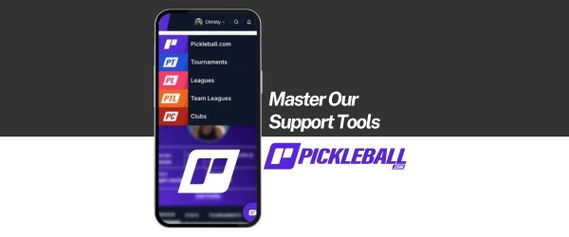
Hit it crosscourt!
Jim Kloss
Dec 29, 2023 09:45 AM ET
DALLAS, TX - In watching a lot of pro and amateur play, I am constantly comparing what I see. What do the pros do that amateurs do not; what do amateurs do that pros do not? How can amateurs watch the pros and learn, make changes in their game, and thereby improve? Obviously, there are differences in athleticism and talent that separate the pros, but you can learn a lot by watching them and imitating their good habits.
One item that stands out in pro v amateur play is the frequency with which shots are hit crosscourt. Pros hit WAY more shots crosscourt than do amateurs. If you did a graph of skill level and frequency with which the ball is hit crosscourt, you would see a simple and direct correlation; the higher the skill level, the more frequently the ball is hit crosscourt.
ADVERTISEMENT
Hitting crosscourt has several advantages, especially in certain shots. First, in hitting a serve return, if you hit crosscourt, you have a greater margin of error. You are hitting the ball over the lowest part of the net, and you have extra room depth-wise. At the sideline, if you hit crosscourt, you have as much as 4 extra feet of depth to work with, versus hitting it right down the line. So, you can hit a harder return and thus a deeper return by going crosscourt.
Second, when dinking, pros hit crosscourt constantly. Watch, for example, Ben Johns when he has a backhand dink. He will hit it either fully crosscourt, or partially crosscourt to the middle, depending on opponents and situation. He will very rarely hit that dink down the line. Once again, he is taking advantage of the lowest part of the net, and the greater depth allowed by hitting crosscourt. Same thing if we watch Collin Johns dinking on the right side off of a forehand. If you wait to see Collin hit a forehand dink anywhere but crosscourt, you will be waiting a long, long time. Dinking middle over also deprives the opponent of any Erne possibility.
The next example is when hitting third shot drops. When playing right side and having a forehand drop, hitting it crosscourt (either fully crosscourt or partially crosscourt to the middle) is the best strategy. We see that implemented constantly by the women pros, as they are playing right side in mixed most of the time. Watch Jessie Irvine or Lucy Kovalova; they will do a forehand topspin drop crosscourt. They will virtually never hit that shot down the line. Same is true when dropping from the left side. Whether you run around your backhand to hit an inside out forehand drop, or you hit a backhand drop, hitting it crosscourt is the best strategy. Good examples of this are Ben Johns off the backhand (especially in singles play) or Christian Alshon off the forehand. Those shots will rarely, if ever, go to the opponent on their left; instead the shot will go middle over to the right sideline.
Finally, third shot drives are another example where hitting crosscourt is best. Hit middle over to the opposite sideline. An occasional down the line drive is ok for surprise, but the best and most consistent shot will be middle over to the full crosscourt side. This again takes advantage of the lowest point of the net. The fact the middle of the net is the lowest point is important. Amateurs hit many more shots into the net than do the pros. Mistakes made by pros are much more likely to involve getting the ball up too high than into the net. No shot hit into the net ever won a point. Better to leave it up and at least have the chance of the opponent making a mistake, or maybe you are able to play good defense and keep the point going.
Hitting crosscourt can be slightly more difficult. Depending on the shot, it can take a little extra footwork and movement to put your body into the best position to hit crosscourt. This is likely the main reason we see amateurs hit straight ahead when they should go middle over. But, put in the extra effort to move your feet, get your body set correctly and hit middle to fully crosscourt. You will cut down on mistakes and your game will improve. Watch the pros on the PPA Tour and imitate what you see; you will benefit!
Follow me on Twitter/X @pickleball_jim
Related articles

Could DUPR really lead to a divorce?
According to a Reddit user, the pickleball rating ended his marriage.
17 days ago
-Victoria Radnothy

Five game-changing tips to elevate your pickleball skills
Learn from one of the best coaching minds in the business, John Cincola.
21 days ago
-Victoria Radnothy
.jpg?width=592&height=237&optimizer=image)
Post-Pickleball Cooldown Routines: Science Proven Methods
23 days ago
-Guest Author

Mastering Our Support Tools
23 days ago
-Tyrece Warner





